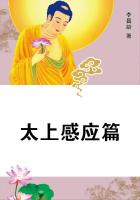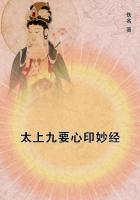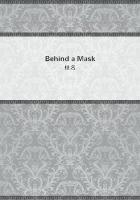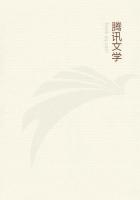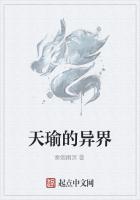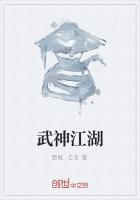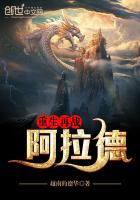If the manu is of English or French writing of the twelfth, thirteenth, fourteenth, or fifteenth centuries, it is probably either--(1) a Bible, (2) a Psalter, (3) a book of Hours, or (4), but rarely, a Missal. It is not worth while to give the collation of a gradual, or a hymnal, or a processional, or a breviary, or any of the fifty different kinds of service-books which are occasionally met with, but which are never twice the same.
To collate one of them, the reader must go carefully through the book, seeing that the catch-words, if there are any, answer to the head lines; and if there are "signatures," that is, if the foot of the leaves of a sheet of parchment has any mark for enabling the binder to "gather" them correctly, going through them, and seeing that each signed leaf has its corresponding "blank."1. To collate a Bible, it will be necessary first to go through the catch-words, if any, and signatures, as above; then to notice the contents. The first page should contain the Epistle of St. Jerome to the reader. It will be observed that there is nothing of the nature of a title-page, but I have often seen title-pages supplied by some ignorant imitator in the last century, with the idea that the book was imperfect without one. The books of the Bible follow in order--but the order not only differs from ours, but differs in different copies. The Apocryphal books are always included. The New Testament usually follows on the Old without any break; and the book concludes with an index of the Hebrew names and their signification in Latin, intended to help preachers to the figurative meaning of the biblical types and parables. The last line of the Bible itself usually contains a colophon, in which sometimes the name of the writer is given, sometimes the length of time it has taken him to write, and sometimes merely the "Explicit. Laus Deo,"which has found its way into many modern books. This colophon, which comes as a rule immediately before the index, often contains curious notes, hexameters giving the names of all the books, biographical or local memoranda, and should always be looked for by the collector. One such line occurs to me. It is in a Bible written in Italy in the thirteenth century -"Qui scripsit scribat. Vergilius spe domini vivat."Vergilius was, no doubt, in this case the scribe. The Latin and the writing are often equally crabbed. In the Bodleian there is a Bible with this colophon -"Finito libro referemus gratias Christo m.cc.lxv. indict. viij.
Ego Lafracus de Pacis de Cmoa or scripsi."This was also written in Italy. English colophons are often very quaint--"Qui scripsit hunc librum fiat collocatus in Paradisum," is an example. The following gives us the name of one Master Gerard, who, in the fourteenth century, thus poetically described his ownership:-"Si Ge ponatur--et rar simul associatur -
Et dus reddatur--cui pertinet ita vocatur."
In a Bible written in England, in the British Museum, there is a long colophon, in which, after the name of the writer--"hunc librum scripsit Wills de Hales,"--there is a prayer for Ralph of Nebham, who had called Hales to the writing of the book, followed by a date--"Fes. fuit liber anno M.cc.i. quarto ab incarnatione domini." In this Bible the books of the New Testament were in the following order:- the Evangelists, the Acts, the Epistles of S. Peter, S.
James, and S. John, the Epistles of S. Paul, and the Apocalypse. In a Bible at Brussels I found the colophon after the index:- "Hic expliciunt interpretationes Hebrayorum nominum Do gris qui potens est p. sup. omia." Some of these Bibles are of marvellously small dimensions. The smallest I ever saw was at Ghent, but it was very imperfect. I have one in which there are thirteen lines of writing in an inch of the column. The order of the books of the New Testament in Bibles of the thirteenth century is usually according to one or other of the three following arrangements:-(1.) The Evangelists, Romans to Hebrews, Acts, Epistles of S.
Peter, S. James, and S. John, Apocalypse.
(2.) The Evangelists, Acts, Epistles of S. Peter, S. James, and S.
John, Epistles of S. Paul, Apocalypse. This is the most common.
(3.) The Evangelists, Acts, Epistles of S. Peter, S. James, and S.
John, Apocalypse, and Epistles of S. Paul.
On the fly leaves of these old Bibles there are often very curious inions. In one I have this:- "Haec biblia emi Haquinas prior monasterii Hatharbiensis de dono domini regis Norwegie." Who was this King of Norway who, in 1310, gave the Prior of Hatherby money to buy a Bible, which was probably written at Canterbury? And who was Haquinas? His name has a Norwegian sound, and reminds us of St.
Thomas of that surname. In another manu I have seen "Articula Fidei:-Nascitur, abluitur, patitur, descendit at ima Surgit et ascendit, veniens discernere cuncta."In another this:-
"Sacramenta ecclesiae:-
Abluo, fumo, cibo, piget, ordinat, uxor et ungit."I will conclude these notes on MS. Bibles with the following colophon from a copy written in Italy in the fifteenth century:-"Finito libro vivamus semper in Christo -
Si semper in Christo carebimus ultimo leto.
Explicit Deo gratias; Amen. Stephanus de Tantaldis scripsit in pergamo."2. The "Psalter" of the thirteenth century is usually to be considered a forerunner of the "Book of Hours." It always contains, and usually commences with, a Calendar, in which are written against certain days the "obits" of benefactors and others, so that a well-filled Psalter often becomes a historical document of high value and importance. The first page of the psalms is ornamented with a huge B, which often fills the whole page, and contains a representation of David and Goliath ingeniously fitted to the shape of the letter.


